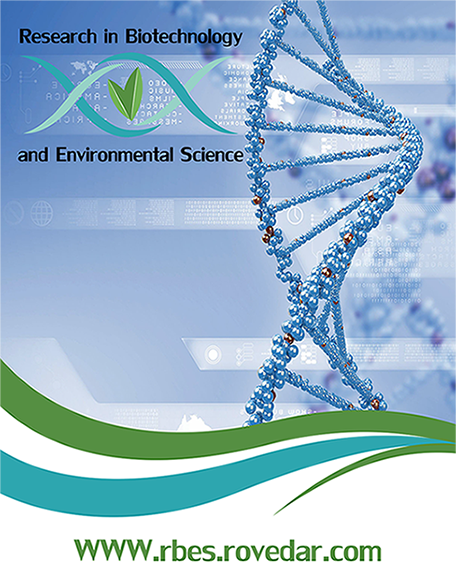Detecting Natural Wolbachia Infection and Supergroup Identification of Metochus uniguttatus in North India
Main Article Content
Abstract
Introduction: Insects, particularly arthropods, have evolved to tolerate a wide range of endosymbionts. Wolbachia is a widely prevalent bacterial endosymbiont that is gaining popularity in insect research due to its utility in pest and vector management. This study aimed to ascertain the spread of Wolbachia in a randomly sampled set of insects, identify any novel Wolbachia infections, and determine the Wolbachia infection’s supergroup.
Materials and Methods: Field capture of insects was carried out manually with netting and gloves, and the insects were immediately stored in absolute ethanol to immobilize them. Phenol-chloroform-isoamyl alcohol was the method used to extract the insect DNA. Insect species identification was carried out via the CO1 mitochondrial gene using PCR amplification. PCR was utilized to identify the presence of Wolbachia, and 16S Wspec DNA was amplified to confirm its presence. The Sanger method was used to sequence the amplified CO1 and the positive samples for Wspec. Using NCBI blast, the sequences of the infected insects were compared with the database sequences. The obtained FASTAs were then aligned using Sequencher 5.4.6, and the chromatograms were examined to ensure contig quality and similarity.
Results: Among the 21 insects screened, one was found weakly positive (Playpleura octoguttata) and two were strongly positive (Metochus uniguttatus and Velarifictorus micado) with Wolbachia, which represented an infection rate of 14.29%. However, the individual infection rate in this limited sample size fell at the lower end compared to extensive surveys reporting rates between 20% and 76%. This study indicated the dissemination of Wolbachia in randomly screened insects. Moreover, this is one of the first records of Metochus uniguttatus being infected with Wolbachia in North India.
Conclusion: This study represents an initial exploration of insects not previously considered hosts of the Wolbachia endosymbiont. The results could be useful for future studies on insect biocontrol and pest management.
Article Details

This work is licensed under a Creative Commons Attribution 4.0 International License.
References
Oulhen N, Schulz BJ, and Carrier TJ. English translation of Heinrich Anton de Bary’s 1878 speech, Die Erscheinung der Symbiose (De la symbiose). Symbiosis. 2016; 69: 131-139. DOI: 10.1007/s13199-016-0409-8
Feldhaar H, and Gross R. Insects as hosts for mutualistic bacteria. Int J Med Microbiol. 2009; 299(1): 1-8. DOI: 10.1016/j.ijmm.2008.05.010
Hertig M, and Wolbach SB. Studies on Rickettsia-like microorganisms in insects. J Med Res. 1924; 44(3): 329-374. PMID: https://pubmed.ncbi.nlm.nih.gov/19972605
Jeyaprakash A, and Hoy MA. Long PCR improves Wolbachia DNA amplification: wsp sequences found in 76% of sixty-three arthropod species. Insect Mol Biol. 2000; 9(4): 393-405. DOI: 10.1046/j.1365-2583.2000.00203.x
Bordenstein S, and Rosengaus RB. Discovery of a novel Wolbachia supergroup in Isoptera. Curr Microbiol. 2005; 51: 393-398. DOI: 10.1007/s00284-005-0084-0
Baldo L, and Werren JH. Revisiting Wolbachia supergroup typing based on WSP: Spurious lineages and discordance with MLST. Curr Microbiol, 2007; 55: 81-87. DOI: 10.1007/s00284-007-0055-8
Slatko BE, Taylor MJ, and Foster JM. The Wolbachia endosymbiont as an anti-filarial nematode target. Symbiosis. 2010; 51: 55-65. DOI: 10.1007/s13199-010-0067-1
Haegeman A, Vanholme B, Jacob J, Vandekerckhove TT, Claeys M, Borgonie G, et al. An endosymbiotic bacterium in a plant-parasitic nematode: member of a new Wolbachia supergroup. Int J Parasitol. 2009; 39(9): 1045-1054. DOI: 10.1016/j.ijpara.2009.01.006
Hilgenboecker K, Hammerstein P, Schlattmann P, Telschow A, and Werren JH. How many species are infected with Wolbachia? – a statistical analysis of current data. FEMS Microbiol. Lett. 2008; 281(2): 215-220. DOI: 10.1111/j.1574-6968.2008.01110.x
Clark ME. Wolbachia symbiosis in arthropods. In: Hoerauf A, Rao RU, editors. Wolbachia: A bug’s life in another bug. Karger Publishers; 2007. p. 90-123. DOI: 10.1159/000104246
Jiggins FM. Male-killing Wolbachia and mitochondrial DNA: Selective sweeps, hybrid introgression and parasite population dynamics. Genetics. 2003; 164(1): 5-12. 10.1093/genetics/164.1.5
Zabalou, S., Riegler, M., Theodorakopoulou, M., Stauffer, C., Savakis, C., & Bourtzis, K. (2004). Wolbachia-induced cytoplasmic incompatibility as a means for insect pest population control. Proceedings of
the National Academy of Sciences, 101(42), 15042–15045. doi:10.1073/pnas.0403853101
Ahantarig A, and Kittayapong P. Endosymbiotic Wolbachia bacteria as biological control tools of disease vectors and pests. J Appl Entomol. 2011; 135(7): 479–486. DOI: 10.1111/j.1439-0418.2011.01641.x
Floate KD, Kyei-Poku GK, and Coghlin PC. Overview and relevance of Wolbachia bacteria in biocontrol research. Biocontrol Sci Technol. 2006; 16(8): 767–788. DOI:10.1080/09583150600699606
Werren JH, Windsor DM. Wolbachia infection frequencies in insects: evidence of a global equilibrium?. Proceedings of the Royal Society of London. Series B: Biological Sciences. 2000; 267(1450): 1277-85. DOI: 10.1098/rspb.2000.1139
Tiwary A, Babu R, Sen R, and Raychoudhury R. Bacterial supergroup‐specific cost of Wolbachia infections in Nasonia vitripennis. Ecol Evol. 2022; 12(9): e9219. DOI: 10.1002/ece3.9219
Metochus uniguttatus insect as described by Thunberg 1822. Last record of the insect in India- https://indiabiodiversity.org/species/ show/276099
Hasan, C. Y., Sutton, R. L., & Replogle, J. B. S. The presence of Wolbachia in Brood X cicadas.
Whitworth TL, Dawson RD, Magalon H, and Baudry E. DNA barcoding cannot reliably identify species of the blowfly genus Protocalliphora (Diptera: Calliphoridae). Proc Biol Sci. 2007; 274(1619): 1731-1739. 10.1098/rspb.2007.0062
Li, Y. Y., Zeng, Y., & Zhu, D. H. (2022). Determination of Wolbachia Diversity in 23 Cricket Species (Gryllidae) From China. Annals of the Entomological Society of America, 115(2), 148-155.
Paulson L, Thakkar B, and PARIKH P. Diversity of agriculturally important insect in and around Vadodara, Gujarat, India. Int J Zool Res. 2020; 10(1): 15-28. Available at: http://www.tjprc.org/publishpapers/2-47-1581163178-2IJZRJUN20202.pdf
The World Mosquito Program, official site- https://www.worldmo squitoprogram.org/

